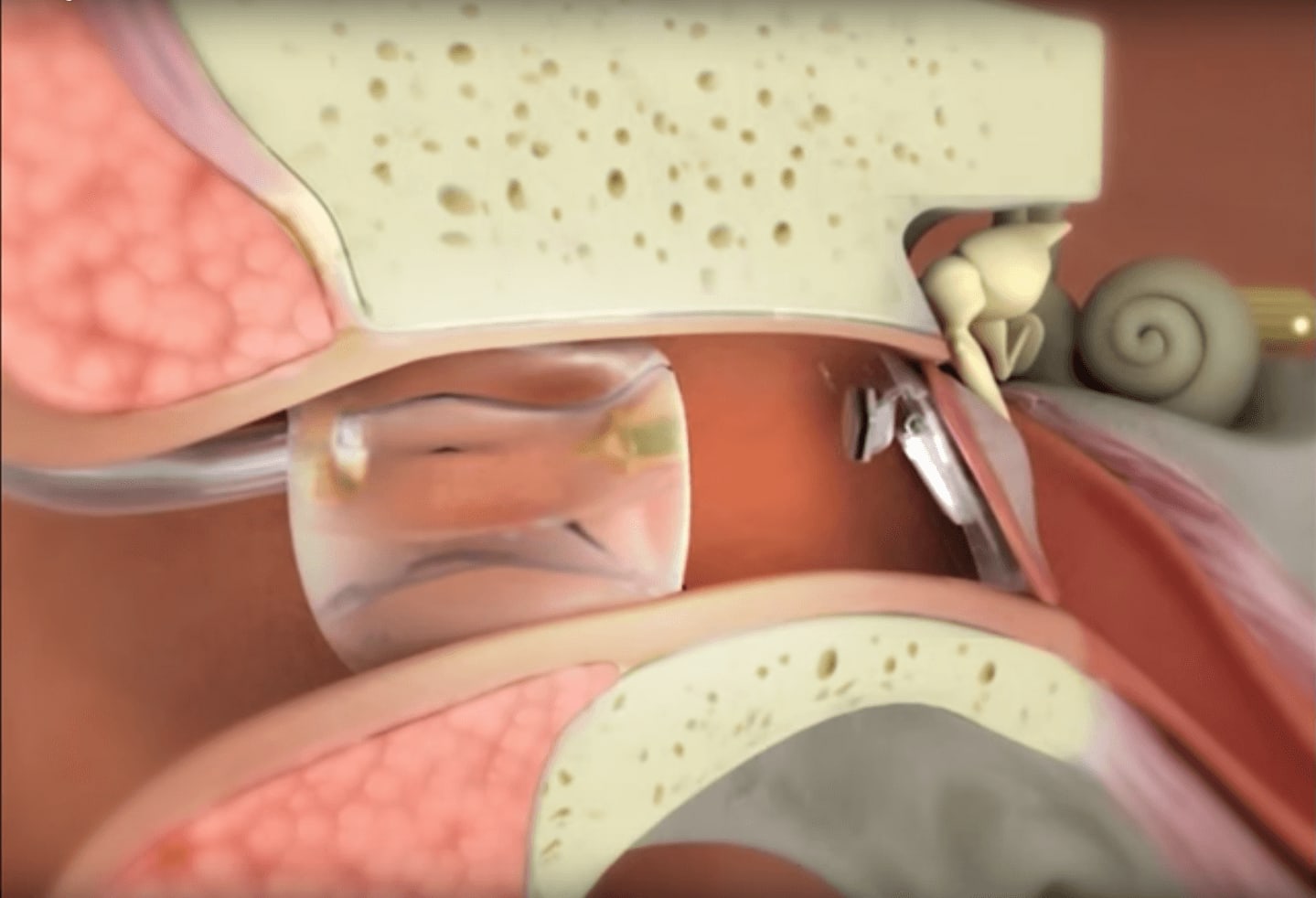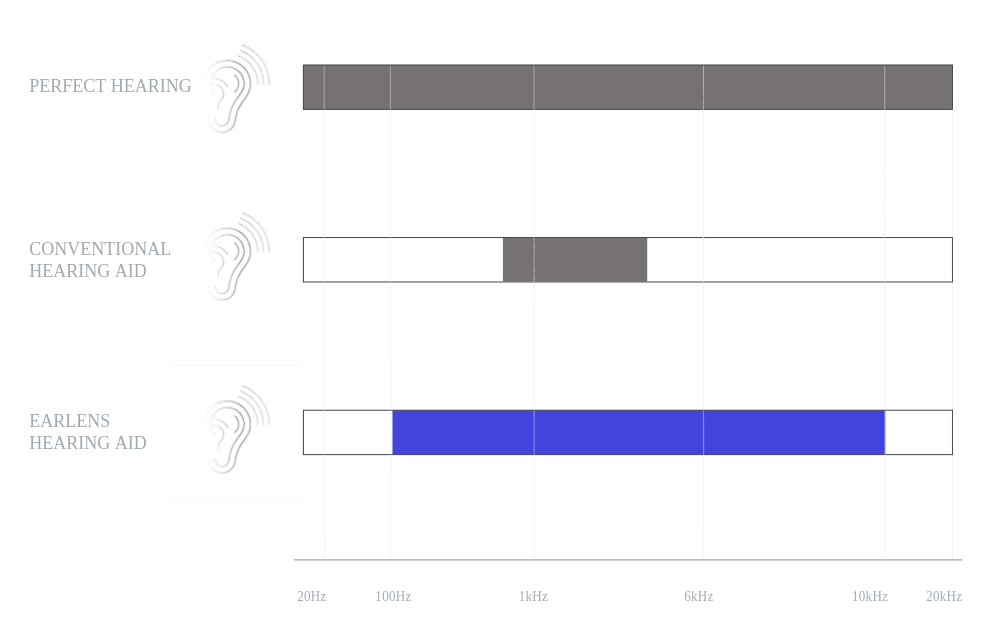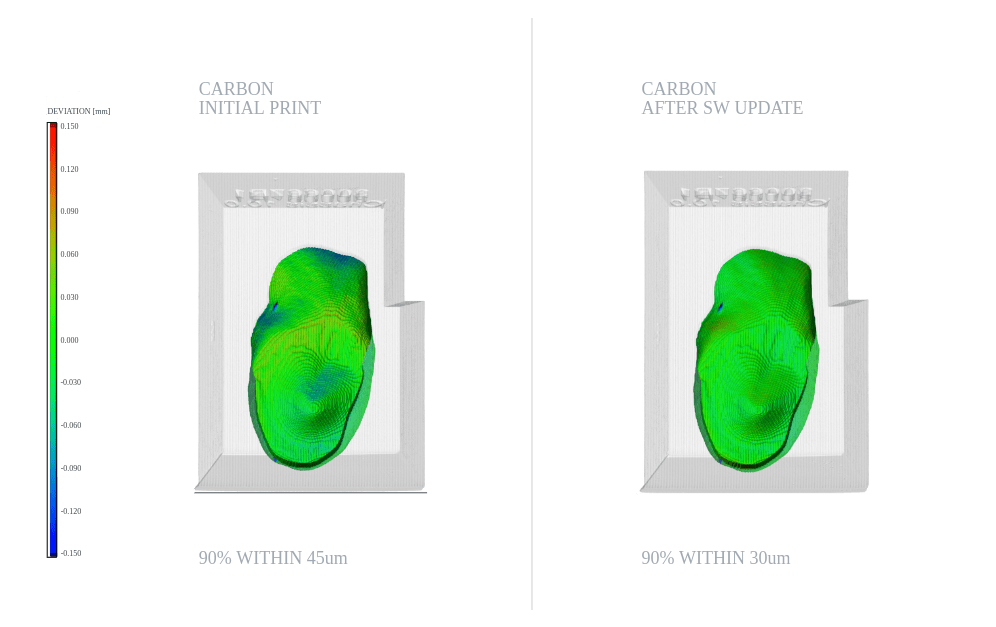In this case study, learn how Earlens Corporation, a maker of custom-built hearing aids, utilized Carbon’s over-the-air (OTA) software update capabilities to improve the accuracy of production molds used in making custom hearing aids.
“We were able to optimize production of the lens mold to achieve the necessary accuracy and product specifications. All we needed was an OTA software update and the part turned out perfect.”
Mark BishopVP Operations, Earlens Corportation
PRODUCT BACKGROUND
California-based Earlens Corporation has developed an innovative hearing aid (Figure 1) that uses a processor and light tip to convert sound to light, eliminating the major source of whistling that troubles users of conventional hearing aids. The newly developed device consists of a light-sensitive lens that rests directly on a patient’s eardrum and gently activates their natural hearing system.

Figure 1: Earlens Corporation hearing aid showing the processor, light source, and lens placed on the eardrum (Source: https://earlens.com)
Moreover, the lens system’s direct contact with the eardrum delivers the broadest frequency on the market, resulting in crisp highs and full lows (Figure 2). This makes this product truly disruptive and solves a genuine human need for better hearing aids.
Figure 2: The Earlens Light-Driven Hearing Aid has the broadest bandwidth on the market. (Source: https://earlens.com)
CHALLENGES
Because the lens system resides inside the human ear, it has to be anatomically accurate and designed according to an individual’s specific anatomy. To deliver on this stringent design goal, Earlens needed a custom mold solution to cast the lens. Due to the mass customization requirement, the Earlens team initially started with a traditional stereolithography (SLA) approach to create the lens mold, but were not satisfied with the outcomes for the following reasons:
- Conventional SLA is slow; it took three to six hours to make a set of lens molds.
- Optimization of the SLA hardware for a specific geometry required tuning that subsequently impacted the printing process of other parts being printed on the same machine.
In addition to the speed of manufacturing challenge, the tunability challenge is worth exploring further. It highlights a limitation typical of all traditional manufacturing approaches: injection molding, casting, and even conventional 3D printing. That is, all product fine-tuning and optimization are hardware driven, meaning that if a system is tuned to be successful for one application, it might be far out of specifications for another application based on the changing machine state. Users, therefore, must manually maintain a log for what has changed on the machine and keep those changes in mind for all future production.
This tedious process leads to poor equipment utilization and poor operational efficiency, increasing costs and time-to-market.
SOLUTION
Carbon’s technology solves these problems by relying on adaptive and software based optimization of the process for a specific application. No hardware changes are required.
Powered by Digital Light Synthesis™ technology, the M Series printers delivered ~10x faster speed and the necessary accuracy when compared to traditional SLA:
- 45-minute print time (with Carbon) vs. three to six hours (traditional SLA)
- 90% of points within +/- 30 microns with Carbon’s PR 25 black material (Figure 3)
Carbon simply performed an OTA software update to optimize the printing process on the M Series printer. This software based optimization for the lens mold guarantees a previously unheard of production flexibility. No physical modifications were made to the printer, material, or post-processing method to achieve the accuracy requirement. This also meant no equipment downtime because the printer was always available to manufacture other production parts using various Carbon materials.
Figure 3: Carbon’s OTA software optimization delivered Earlens molds that met the production accuracy, speed, and manufacturability specifications with no hardware changes.
RESULTS
Leveraging Carbon’s M Series printer, PR 25 resin, and OTA software updates, Earlens Corporation is able to 3D manufacture lens molds that are anatomically accurate (90% within +/- 30 microns) with unparalleled print speed (45 minutes).
Interested to embark on a similar product development journey with our Life Sciences team? Contact us at lifesciences@carbon3d.com.

